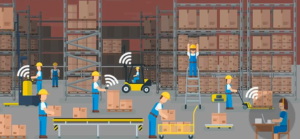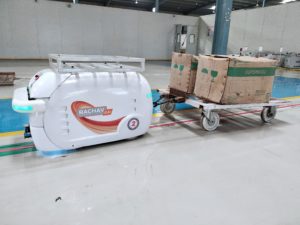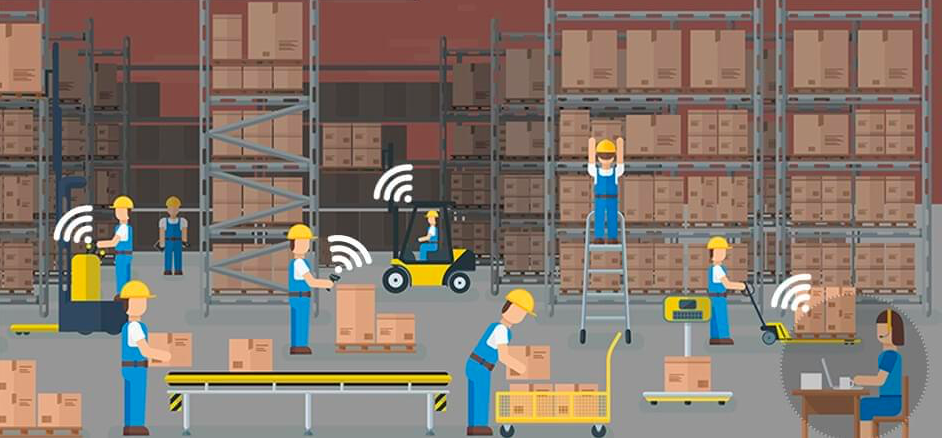 As we continue the series of focused blogs on next-gen technologies, we shall now look at how the Internet of Things promises to transform material handling forever.
As we continue the series of focused blogs on next-gen technologies, we shall now look at how the Internet of Things promises to transform material handling forever.
Any improvement in material handling, which plays a pivotal part in any industry’s supply chain, translates into meaningful business value. Manufacturers and warehouse owners continuously try to speed up processes, increase worker efficiency, avoid product damage, and ensure overall safety.
With the embrace of IoT, industry players can hope to improve on all these aspects. Let us see how!
Increased visibility
For years, sensors and tags – RFID and barcode – have been used to track materials and products through the warehouse. Real-time visibility into the location of items helps make informed operational decisions.
IoT takes the concept of Warehouse Management to the next level by creating an interconnected, accessible system that knows where everything is and what it is doing.
Safety Ensured
Material handling is a risky line of work. Products, large in size or quantity, can cause significant harm to workers if not handled properly.
The best way to protect your workers is not to involve them! IoT-enabled automation and monitoring technologies can aid the transport of material without any labor input.
AGVs and AMRs can tug, pull or carry heavy material from one place to another on their own (check out Yantra’s line of AGV/AMRs here). Infusion of IoT also helps in remotely monitoring and controlling them. The adoption of such material handling robots has been rising as manufacturers realize their business benefits. The global material handling equipment market is estimated to touch $200 billion by 2025.
Enhanced Efficiency
Along with improving worker safety, IoT-enabled automation also speeds up the processes and reduces errors. Robots are excellent at handling repetitive tasks efficiently. Thus, functions like pick-up and drop of materials, loading and unloading trucks, etc. can be done by robots in half the time vis-à-vis workers.
The adoption of IoT entails a continuous and enormous generation of data. This data, when used to analyze processes and improve operations, can deliver exceptional results. Warehouse Management Systems can source data from sensors placed throughout the warehouse and identify inefficiencies. Managers can then take necessary actions to improve subpar processes.
Moreover, data-backed predictive maintenance can help prevent unexpected breakdowns in warehouse equipment. For instance, sensors placed in a forklift can track the health of motor, battery etc. Issues can be flagged early on and a technician can be assigned immediately to fix the issue before it causes a major setback.
Quality Controlled
Certain products, especially perishables, require suitable conditions to ensure the material does not lose quality. Temperature, humidity, energy consumption, etc. are some of the most common parameters tracked in storage and movement. IoT sensors and systems can help keep an eye and alert the workers in case of any deviations.
Summary
The promise of IoT goes beyond just generating large amounts of data points. It shall transform material handling entirely from safety to efficiency to quality control. Thus, it makes perfect sense for manufacturers and warehouse owners to adopt IoT for material handling at the earliest.
Yantra brings the power of IoT to mobile robots
Being an R&D organization at the core, we continually try to take our products to the next level. We have made our products IoT-enabled and are excited to deliver the benefits to our customers. Remote assistance, real-time monitoring, and insightful analysis can help end-users reap maximum benefits from our product line.
Stay tuned to our Knowledge Corner for regular updates on next-gen technologies and their applications. We shall continue to post insightful and interesting blogs in the coming weeks.



